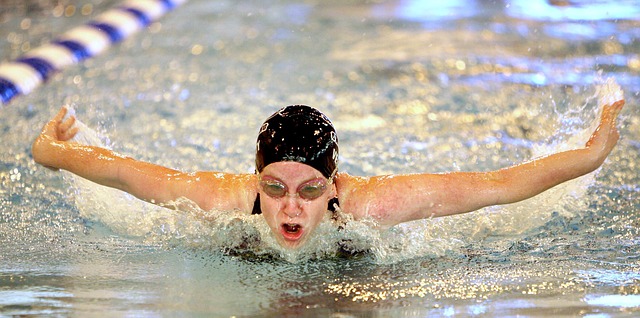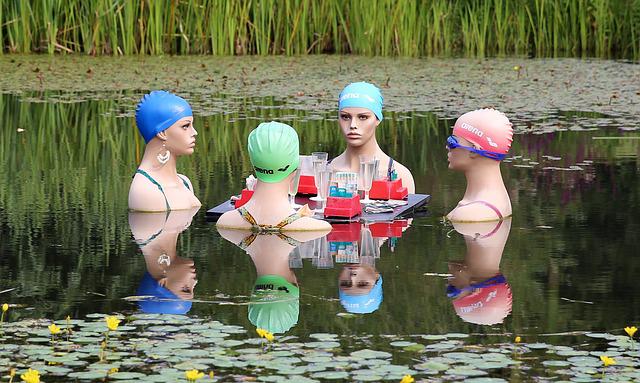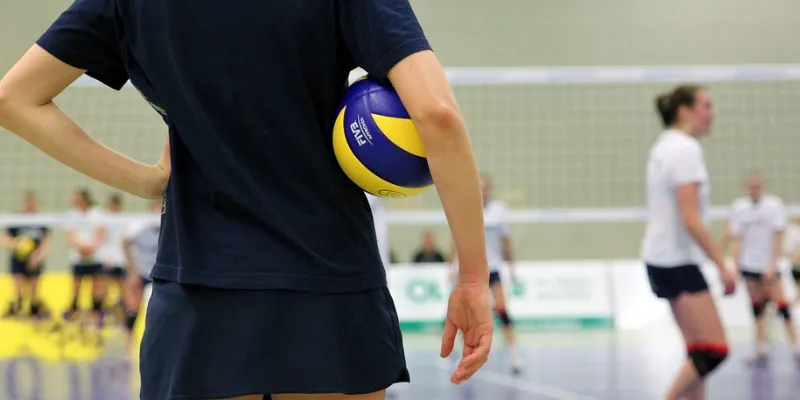How To Put On A Swim Cap? With Useful Advice

First, how to put on a swim cap?
Take hold of the cap with both hands. Bring the hat’s interior front over your forehead by bending a little. Once it is snug against your hairline, pull the hat over your head.
I will show you more information in the post, please read on.
Table of Contents
The Easiest Way To Put On A Swim Cap
Once your hair is in place and ready, stretch the cap out as far as you can without tearing the material or damaging the cap. Next, take hold of the cap with both hands.
Put the inside of the swim cap’s front over your forehead while stooping a little. Next, adjust the cap so that the back of your head is covered by the bottom of your hairline. It might take a few tries to get it right, but once you do, make sure the cap is firmly fastened and your hair is completely tucked in. With the swim cap on, your ears should be partially covered.
Tip: Competitive swimmers may put on their goggles before their swim cap in order to lessen drag and keep them in place while the cap is on, but goggles can also be worn over the swim cap. Pick whichever option makes you more comfortable. Read about: How To Put On A Swim Cap With Long Hair
Put On A Swim Cap With A Friend
Have a friend hold the back portion of the swim cap while you stand in front of them after you’ve fixed your hair. Aligning your head with the peak of the cap, grab the front portion with both hands and bow. When you’re ready, ask a friend to pull the cap back over the rest of your head. Stand up and adjust.
This approach works well for parents helping a child put on a swim cap because it gives the wearer assistance with the more challenging task of stretching the cap over their head.

Read about: How To Clean Swimming Goggles?
Why Swim Caps Are A Must For Swimming?
- To ensure that hair stays away from the face: It’s crucial that your hair stays off your face while swimming so that it doesn’t obstruct your nose or eyes, which could be really annoying. This can be avoided by wearing a swimming cap, which will also keep hair out of the way of the face while swimming.
- To shield the hair from chlorine’s damaging effects: Although your child’s hair will still get wet, wearing a cap will stop your hair from getting saturated with the pool’s chlorinated water, which can damage your hair.
- For reasons of hygiene, swimmers without caps lose hair in the water, which floats to the surface and clogs the filters.
- Warmth: When swimming, a swim cap will help to keep the head warm and conserve body heat. 7 to 10 percent of a person’s body heat is lost through the head, according to a 2008 BMJ report.
How To Secure Your Hair Under A Swim Cap?
Make a ponytail out of your long hair. Make sure your hair is tied tightly into a bun and is sitting high on your head (not just above your neckline) if it is long enough to peek out from underneath the cap even when it is pulled back into a ponytail.
Put your hair in a bun or a ponytail and lightly mist it. When your hair is damp, the cap’s material slides on more easily. The cap may painfully pull or tug on hair strands if it is dry.
Tip: While also making it easier to put on, baby powder can help prevent your swim cap from grabbing your hair when you take it off.
How To Care For Your Swim Cap?
Swim caps typically need to be replaced after several months of use, depending on how frequently they are used and the material they are made of. However, with the right maintenance, you can increase the lifespan of your swim cap. Here are some guidelines for care:
Rinse After Use
After each use, thoroughly rinse your cap with clean, chlorinated water. Utilize a gentle, dry cloth to completely dry the cap.
Proper Storage
Keep your swim cap out of direct sunlight in a cool, dry place.
Tip:
The material inside the cap can be kept from sticking to itself by lightly dusting it with baby powder or talcum powder. Furthermore, it will soak up moisture, halting the growth of bacteria or mold.
Why Swim Caps?
Considering whether to buy or deal with swim caps for your child? Swim caps are useful for a variety of reasons:
- Protect against the damaging effects chlorine, salt, and sun can have on your child’s hair, such as drying it out or causing tangles
- Don’t risk snagging or pulling on your child’s hair by helping to secure the goggles on their head.
- Swim caps can help your child’s hair stay contained while competing, resulting in a more streamlined form and reducing drag.
Why Use A Swim Cap When Swimming In Open Water?
Swim caps are beneficial to open-water swimmers in addition to triathletes for the same reasons that have already been stated.
First off, a swimming cap can keep your head warm in chilly water. Any swim cap will keep your head warmer than none, but a neoprene cap is your best option if warmth is your main priority. You can keep your head warm while swimming by wearing one of these caps, which are made of the same material as swimming wetsuits.
In order to increase your visibility while swimming in the lake or ocean, wear a swim cap. Open-water swimmers must be visible in order for boaters to see them or in case an emergency arises that requires their being located in the water. Having a bright swim cap can make you much easier to spot in the water, and fortunately, swim caps are available in a wide range of hues.

What A Swim Cap Won’t Do
If you’ve never worn a swimming cap, you might believe that it will keep your hair dry or that it will shield your ears from the water. Even though swim caps have a tight fit, they are unfortunately not made to create a water-tight seal, so some water can still enter the cap. Thus, even when wearing a swim cap, water can still enter your ears and get into your hair to some extent.
The best solution, if you’re worried about water getting in your ears, is to use earplugs like arena’s Swimmers. These are specially made to keep water out without impairing hearing or balance. In the event that you choose to wear earplugs, a swim cap can keep them in place.
Types Of Swim Caps
Now that you are aware of the advantages of wearing a cap, let’s examine each type of swimming cap and the reasons you might want to use it. Let’s examine the differences to see how they differ, which mainly depends on the materials used in swim caps.
Silicone Caps
Swimmers of all abilities should consider silicone swim caps. These hats are suitable for both training and competition. They are strong and won’t lose their elasticity over time. Silicone hats fit perfectly because they are cozy and conform to the shape of your head. Compared to swim caps made of latex, these caps are usually a little thicker.
Lycra/Spandex-style Caps
For swimmers who swim for recreation or fitness, Lycra swim caps (or fabric similar to Lycra) are a great option. arena’s 80% polyamide and 20% elastane are used to make the Smart Cap, an example of this kind of cap. These hats are very comfortable and simple to put on.
Latex Rubber Caps
A great alternative for every swimmer is a swim cap made of latex. Many of the advantages of the silicone swim caps above are also available with these caps. They’ll adapt to your head for a snug fit. As compared to silicone caps, these caps are typically a little thinner. Because latex feels lighter in weight than silicone, some swimmers prefer it over silicone.
Molded Caps
The ideal swim cap for competitive swimming is molded. To prevent wrinkles from forming when you put on these racing caps, they are molded into a dome shape. Out of all the swim caps, these will give you the greatest hydrodynamic advantage during races. They can be utilized for both training and competition.
A study found that the 3D molded cap from Arena significantly reduced drag compared to caps made of Lycra and only slightly reduced drag compared to caps made of silicone. A race benefits greatly from any reduction in drag, no matter how small.
Conclusion
How to put on a swim cap? Do you get it?
For swimmers, a swim cap is an essential piece of equipment. Swim caps can help keep hair out of your face and the pool while also reducing drag in the water, preventing chlorine from destroying your hair, and keeping your hair from becoming damaged. Even though it appears easy, putting this tiny silicone cap on your head can be difficult if you’re not used to it.
Before entering the water, make sure the swim cap is fastened securely to ensure you get a great swim workout.







